Everything You Need to Know about Backhoes
This blog contains information about different topics that could be useful for mechanical, electrical and electronic professionals. We look forward to contributing to the expansion of your technical knowledge.
The Backhoe
Often referred to as the swiss army knife of heavy equipment, the backhoe is great for excavation and digging projects of all sizes – one end to dig up dirt and the other end to move it around. It’s the machine that is great for any project. It is a popular piece of equipment seen on many job sites.
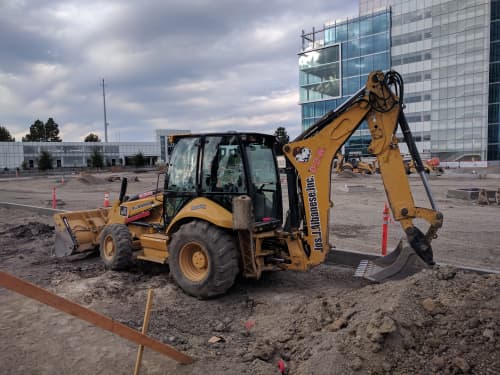
The Different Attachments for the Backhoe
The backhoe can be fitted with hydraulic power attachments. This allows the machine to be used for other tasks besides lifting and digging.
The most common kinds of backhoe attachments used by contractors are breakers and hammers. They allow the operator to break up rocky soils, asphalt and concrete. The tiger tooth attachment is good to break through frost or harder soil which makes the backhoe a valuable piece of equipment especially in northern climates.
Popular Attachments
- Buckets with thumbs
- Hammers
- Couplers
- Compactors
- Rippers
- Brooms and street sweepers
- Snowplows and snow pushes
- Augers
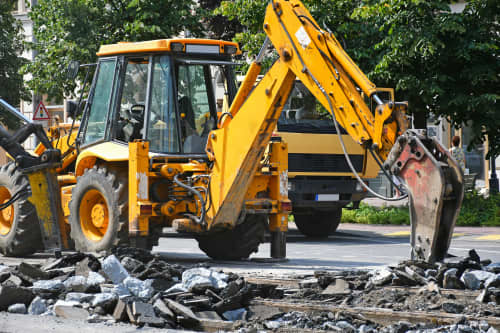
Manufacturers of Backhoes
The United States and Europe both have many companies that manufacture backhoe loaders. The following looks at popular makes and models of backhoe loaders.

Caterpillar (CAT) was founded in 1925 when C. L. Best Tractor Company joined with Holt Manufacturing Company. The name Caterpillar comes from Benjamin Holt’s invention of the continual-tracked system. When he invented the track system, he called it a “caterpillar” for how it made the machine crawl along the ground. When Holt joined with C.L. Best Tractor Co. the name Caterpillar followed him.
Caterpillar manufactures both backhoes and specialized attachments to replace both the hoe and the loader. Soil excavation buckets, coral buckets, ditch cleaning buckets and rock buckets can all be attached to the backhoe. CAT also manufactures rakes, snowplows, angle blades, asphalt cutters and material handlers that can replace the traditional backhoe loader.
The CAT 450 features a 131 hp engine, advanced hydraulic system and the CAT C4.4 ACERT engine. On the other end of the spectrum is the CAT 415F2 and 415F2 IL. These two models have a 68 hp engine. The max operating weight of the 415F2 IL is lower than the former model but they mimic each other in almost every other way.


Launching with the creation of the steel plow, John Deere established the John Deere Company in 1837. John Deere has since grown to be one of the most recognized brand names in equipment.
John Deere now produces seven different kinds of backhoes. Their largest backhoe is the 710L with a 148 hp engine at 2,240 rpm and a max operating weight of 11,607 kg (25,588 lbs). The most compact John Deere backhoe is the 310L EP backhoe. With 69 hp at 2,010 rpm this equipment has a max operating weight of 6,270 kg (13,822 lbs), powershift transmission and a dipper stick dig depth of 4.3 m (14 ft 1 in).
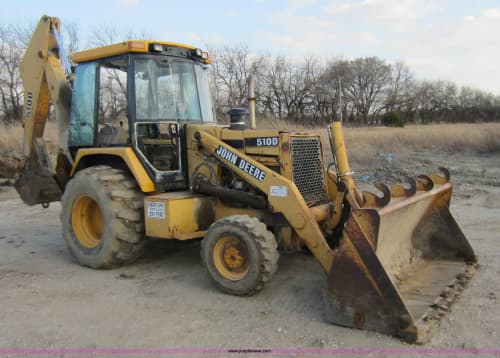
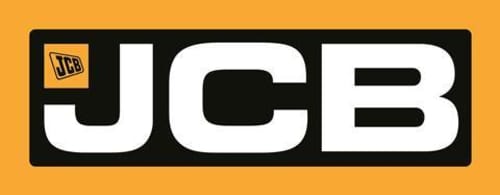
Founded by Joseph Cyril Bamford (JCB) in 1945, JCB was the first to manufacture a backhoe. The company has grown to be the world’s leading backhoe manufacturer and producer; JCB has 22 plants on four continents. Their equipment sells in over 150 countries. Every year JCB sells as many backhoes around the world as all other manufacturers put together.
JCB’s most popular loader is the 3CX 15 Super Backhoe with 109 hp engine and a bucket breakout force of 12,603 lb / ft. Their other models include the 3CX Compact Backhoe Loader, 3CX Backhoe Loader and the 4CX-15 Super Backhoe Loader.
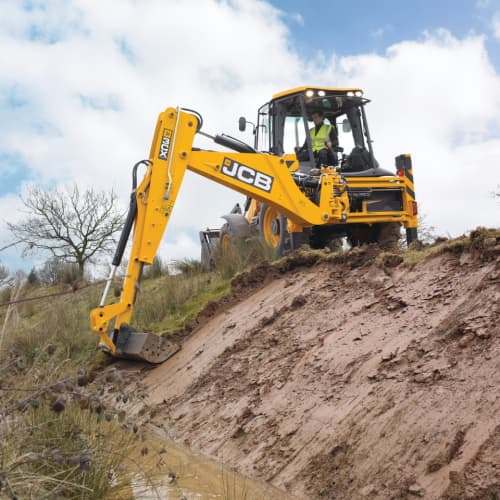

J.I. Case’s work in the field of steam engines eventually led to the founding of CASE Construction Equipment. The company started off creating equipment for road construction and has since grown into one of North America’s leading manufacturers of construction equipment.
In 1957 CASE introduced the CASE Model 320 – the first factory-integrated tractor loader/backhoe. In 2005, CASE manufactured its 500,000th backhoe.
The N-Series Backhoe Loader now offers a temporary power surge to produce up to 8% more breakout, shift 6-speed transmission with improved fuel economy, advanced drivetrain and state of the art hydraulics. In 2017 the CASE 580N Series won EquipmentWatch’s Highest Retained Value Award for the second consecutive year.
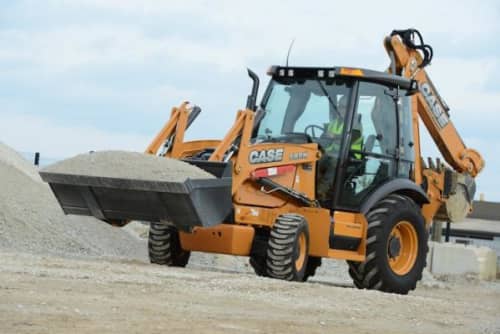
Potential Hazards for Backhoe Operation
Like with the operation of any piece of heavy equipment, operating a backhoe can present a series of hazards and dangers. It is always important to only operate the equipment after receiving proper training and to never use a backhoe – or any other kind of equipment – if it is not safe to do so.
Working too close to an edge and operating on steep or uneven ground are the two leading causes of accidents for backhoes and backhoe operators. Take the planning stage seriously and always review site plans, survey a worksite for hazards and circle check equipment before beginning to operate.
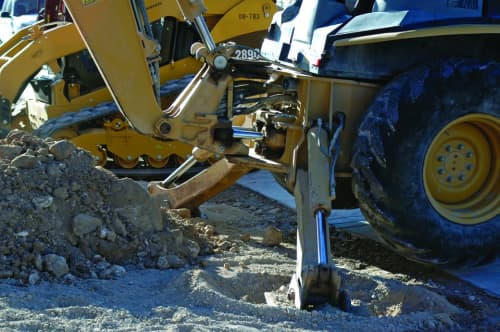
Other hazards include…
- Raising the bucket too high. This is especially dangerous if the equipment is on unstable ground as it could cause the equipment to tip over.
- Operating on a steep slope. They can overturn or flip over so take caution when operating on a steep slope.
- Not wearing the seatbelt. Falling out of the cab can put both the equipment, the operator, and others around the machine in danger. Always wear a seatbelt.
- Hitting an object. Especially when working on rough terrain, be aware of people, buildings, trees or other objects that may be around the equipment.
- A falling load. When lifting or moving materials, be aware of others around the bucket. Falling dirt, debris, or material can strike and injure another worker.
Putting safety first and taking time to follow procedures will help ensure that all workers go home safe at the end of the day.
Practices for the Safe Operation of Backhoes
Some simple ways to stay safe include:
- Always wear a seatbelt
- Never operate the equipment without having the stabilizers down
- Never exceed the maximum operating weight of the machine
- When moving loads, travel with loads low and close to the ground
- Be mindful of visibility when moving loads or material
- Always check blind spots before moving
- Never use a bucket to lift or carry people
- Driving speeds on-site should stay around 5 mph (approximately 8 kph)
The History of the Backhoe
Today the market for backhoe loaders has been cut by the use of mini-excavators and skid steers. However, they continue to be adored by contractors everywhere for their versatility and ability to do different jobs fairly well.
The first backhoe was introduced after the hydraulic system was developed and the first backhoe swing frame was invented by Vaino J Holopainen and Roy E Handy, Jr. in July 1947. It was patented one year later and the two men came together to start the company Wain-Roy. The swing frame was a breakthrough invention that allowed the hydraulic guiding arm to swing to the side of the bucket.
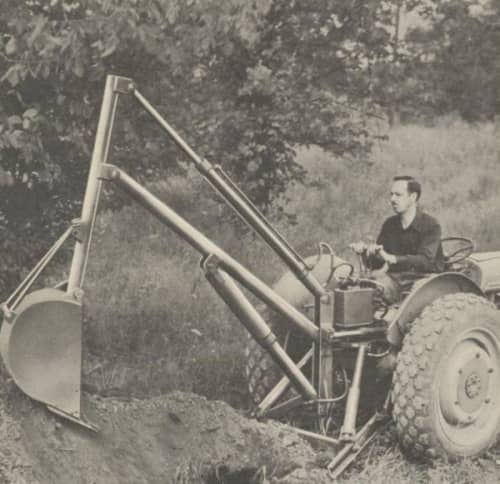
The very first hydraulic backhoe was sold in 1948 by Wain-Roy Co. Sold mainly through Ford dealers, Wain-Roy sold about 7,000 backhoes between 1948 and 1954.
While all of this was going on JCB launched the first European hydraulic loader in 1948. Joseph Syril Bamford stated JBC in England with the creation of two-wheeled trailers. This advanced into a four-wheel tipping trailer with the addition of the hydraulic power system and eventually led to the creation of the loader. The backhoe is colloquially called “JCB” in Ireland and the UK.
In 1953 JCB took their hydraulic loader and added it to one side of a tractor with the hydraulic arm on the other side, and the multipurpose backhoe loader was born. Although JCB didn’t bring their loaders to American until the 1960s, the machines were already making an appearance.
CASE Corporation – an American company – introduced the first factory-integrated backhoe loader in 1957. With the production of the equipment on a larger scale, American contractors and farmers already recognized the power and versatility of the backhoe before JCB arrived on American soil. It took another 14 years until the extendable backhoe was introduced.
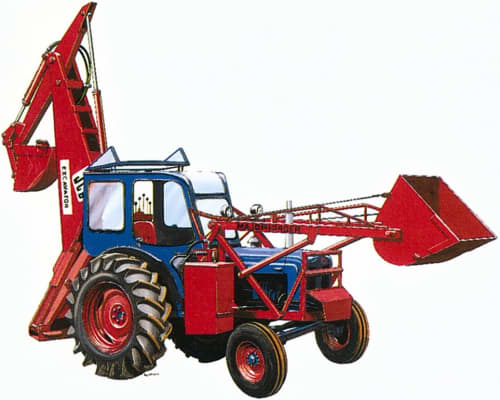
Comentarios
Publicar un comentario